Prefab House by Lida Group Offers Modern Living
2025-Nov-07 14:56:35
By Admin
In an era where urbanization is accelerating at an unprecedented pace, and people’s expectations for living spaces are evolving beyond mere shelter, the traditional housing industry is struggling to keep up. Long construction timelines leave families waiting for years to move into their dream homes; rigid designs fail to cater to diverse lifestyle needs; and poor energy efficiency leads to soaring utility bills that burden households. However, a transformative solution has emerged in the form of prefabricated housing, and at the forefront of this revolution is Lida Group. With three decades of expertise in modular construction, Lida Group has redefined what modern living means by crafting prefab houses that seamlessly blend speed, comfort, intelligence, and sustainability. This article delves into how Lida Group’s prefab houses are meeting and exceeding the demands of modern residents, offering a new standard of living across the globe.
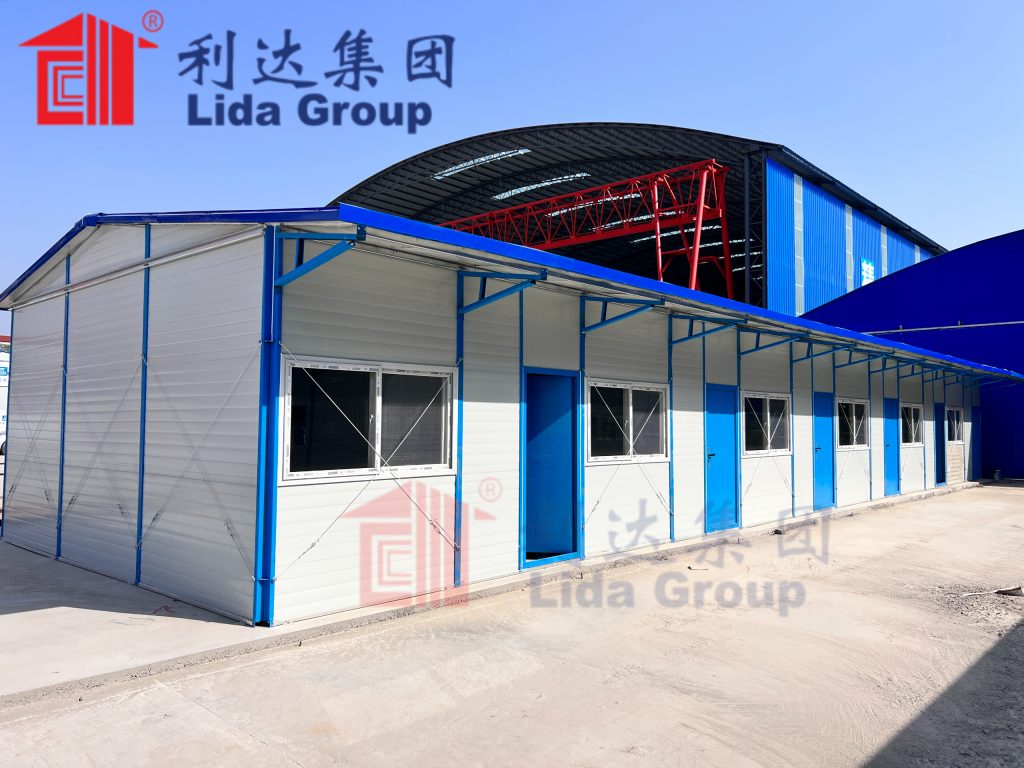
The Changing Face of Modern Living: What Today’s Residents Need
To understand the appeal of Lida Group’s prefab houses, it is first essential to grasp the shifting needs of modern residents. Gone are the days when a house was just a place to sleep and eat. Today, people seek living spaces that adapt to their dynamic lifestyles, support their well-being, and align with their environmental values.
One of the most pressing needs is flexibility. In a world where work patterns are changing—with remote work becoming a permanent fixture for many—residents require spaces that can easily transition from a home office to a relaxation area. A 2025 survey by the Global Living Institute found that 78% of remote workers cited “dedicated, convertible workspaces” as a top priority when choosing a home. Traditional houses, with fixed room layouts, often fail to meet this need, forcing residents to compromise on either work productivity or living comfort.
Sustainability is another non-negotiable factor for modern residents. Younger generations, in particular, are increasingly conscious of their carbon footprint, and 82% of potential homebuyers consider energy efficiency and eco-friendly materials when making purchasing decisions, according to a report by the International Real Estate Federation. Traditional construction methods, which rely on energy-intensive processes and generate massive amounts of waste, are no longer acceptable to environmentally aware consumers.
Speed is also a critical concern. In fast-paced urban environments, waiting 2–3 years for a traditional house to be built is impractical. Newlyweds, growing families, and professionals relocating for work need homes they can move into quickly without sacrificing quality. A study by the Construction Industry Institute revealed that 65% of homebuyers would choose a prefab house over a traditional one if it could be delivered in under 6 months.
Additionally, intelligence has become a key component of modern living. From smart thermostats that adjust temperatures based on occupancy to security systems that can be controlled via smartphones, residents expect their homes to be equipped with technology that enhances convenience and safety. A 2024 survey by TechHome found that 91% of homeowners want at least three smart home features in their next residence.
Lida Group’s prefab houses address all these needs, offering a living experience that is tailored to the demands of the 21st century. Unlike traditional housing, which often feels outdated the moment it is built, Lida’s prefab homes are designed to evolve with residents, ensuring long-term satisfaction..
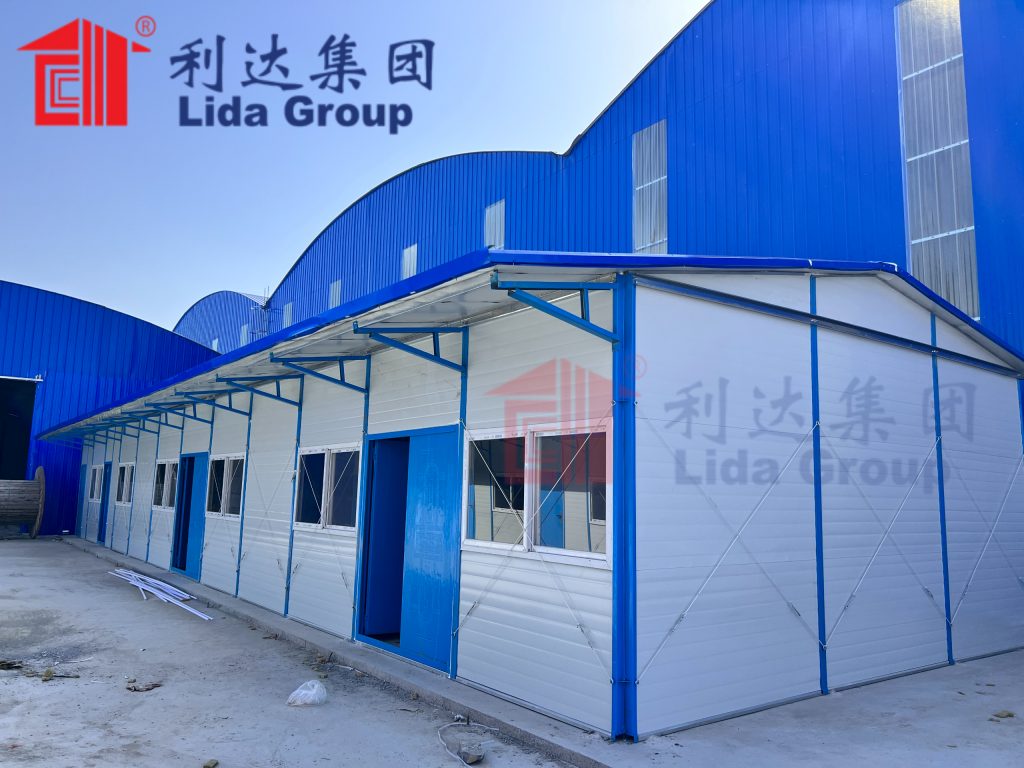
Lida Group’s Prefab House Design: Where Aesthetics Meet Functionality
At the core of Lida Group’s prefab houses is a design philosophy that prioritizes both aesthetics and functionality. The company’s team of 500+ in-house designers and engineers works tirelessly to create homes that are not only visually appealing but also highly practical, ensuring every square foot of space is utilized effectively.
1. Flexible Layouts: Adapt to Every Lifestyle
Lida Group’s prefab houses are built on a modular system, which means that rooms and components can be easily rearranged or expanded to suit changing needs. This flexibility is a game-changer for modern residents. For example, a 2-bedroom prefab house can be converted into a 3-bedroom space when a family grows, or a spare bedroom can be transformed into a home office with the addition of a foldable desk and soundproof partitions.
Take the case of the “Lida Flex” series, one of the company’s most popular prefab house lines. The Flex series features modular wall systems that can be moved or removed without structural modifications. A young couple in Shanghai, who purchased a 750 sq. ft. Lida Flex house in 2024, initially used one room as a home gym. When they welcomed their first child a year later, they simply reconfigured the space into a nursery, adding a built-in crib and storage units that seamlessly matched the existing decor. “We never thought a prefab house could be so adaptable,” said the husband, a software engineer. “It feels like the house is growing with us.”
Lida Group also offers customizable floor plans to cater to specific lifestyle needs. For outdoor enthusiasts, there are layouts with large storage spaces for gear like bikes and camping equipment; for art lovers, there are designs with high ceilings and natural light-filled galleries to display collections. The company’s online design tool allows customers to experiment with different layouts, choosing from a range of room sizes, window placements, and finishes, ensuring that the final home is a true reflection of their personality.
2. Aesthetic Excellence: Modern, Timeless Designs
Gone are the days when prefab houses were associated with drab, cookie-cutter designs. Lida Group’s prefab houses boast sleek, modern aesthetics that rival those of high-end custom homes. The company draws inspiration from global design trends, incorporating elements like clean lines, minimalist facades, and natural materials to create spaces that feel both contemporary and timeless.
The “Lida Vista” series, for instance, features large floor-to-ceiling windows that flood the interior with natural light and offer panoramic views of the surrounding landscape. The exteriors are clad in a combination of wood siding and metal accents, giving the homes a warm yet modern look. In a suburban community outside Beijing, a row of Lida Vista houses has become a local landmark, with their distinctive gabled roofs and curated landscaping standing out among the traditional brick homes in the area.
Lida Group also pays close attention to interior design details. The homes come with a range of finish options, from premium hardwood floors to quartz countertops, allowing customers to create a high-end look without the high-end price tag. The company’s designers also focus on creating cohesive color palettes and texture combinations that enhance the sense of space. For example, light gray walls paired with white cabinetry and brass fixtures create a bright, airy atmosphere in kitchens, while warm wood tones in living rooms add a sense of coziness.
In addition to modern designs, Lida Group also offers “heritage-inspired” prefab houses that blend traditional architectural elements with modern functionality. These homes feature details like gabled roofs, dormer windows, and stone accents that pay homage to classic styles, making them suitable for historic neighborhoods or areas with strict design guidelines. A family in Suzhou, China, purchased a heritage-inspired Lida prefab house that perfectly complements the city’s traditional gardens, proving that prefab homes can fit seamlessly into any architectural context.

Smart Living: Technology That Enhances Daily Life
Lida Group recognizes that modern living is incomplete without smart technology, and its prefab houses are equipped with a range of intelligent features that make daily life easier, safer, and more efficient. The company has partnered with leading tech firms to integrate cutting-edge systems into its homes, ensuring that residents have access to the latest innovations.
1. Smart Home Automation: Control at Your Fingertips
Every Lida prefab house comes with a centralized smart home system that can be controlled via a smartphone app or voice commands. This system allows residents to manage everything from lighting and temperature to appliances and security, all from one platform. For example, in the morning, residents can use the app to turn on the coffee maker and adjust the thermostat to a comfortable temperature before getting out of bed. At night, they can lock all doors, turn off lights, and arm the security system with a single voice command.
The smart lighting system is particularly impressive, offering customizable brightness and color options to suit different moods and activities. Residents can set “work mode” to a bright, cool white light that enhances focus, or “relax mode” to a warm, dim light that promotes calm. The system also includes motion sensors that automatically turn on lights when someone enters a room, reducing energy waste. A study conducted by Lida Group found that residents of its smart prefab houses use 23% less electricity for lighting compared to those in traditional homes.
Another key feature is the smart HVAC (Heating, Ventilation, and Air Conditioning) system, which uses AI to learn residents’ habits and adjust temperatures accordingly. For example, if the system detects that residents are usually away from home between 9 AM and 5 PM, it will automatically lower the temperature (in winter) or raise it (in summer) during those hours, then adjust it back just before they return. This not only saves energy but also ensures that the home is always at a comfortable temperature. A family in Guangzhou reported saving 35% on their monthly heating and cooling bills after moving into a Lida prefab house with the smart HVAC system.
2. Advanced Security: Peace of Mind for Residents
Safety is a top priority for modern residents, and Lida Group’s prefab houses are equipped with state-of-the-art security features that provide round-the-clock protection. Each home comes with a video doorbell that allows residents to see and speak to visitors from anywhere using their smartphone. The doorbell also has motion detection capabilities, sending alerts to the app if someone lingers near the front door.
Inside the home, wireless security cameras can be placed in key areas like the living room and entryway, providing real-time video feeds to the app. The cameras have night vision and two-way audio, allowing residents to check on their home at any time and even speak to pets or house sitters. For added security, the smart lock system uses facial recognition or fingerprint scanning, eliminating the need for keys and reducing the risk of break-ins.
In the event of an emergency, the smart home system is integrated with a 24/7 monitoring service. If a smoke detector goes off or a window is broken, the system automatically alerts the monitoring center, which then contacts the resident and, if necessary, local emergency services. A senior couple in Chengdu credited the security system with saving their lives when a small kitchen fire broke out while they were asleep. The smoke detector triggered the alarm, and the monitoring center dispatched firefighters within minutes, preventing the fire from spreading.
3. Energy Management: Sustainable and Cost-Effective
Lida Group’s smart prefab houses also include advanced energy management features that help residents reduce their carbon footprint and save money on utility bills. The homes are equipped with solar panels that generate electricity, which can be used to power appliances or stored in batteries for later use. The smart energy system tracks energy production and consumption in real time, providing residents with detailed insights into how much energy they are using and where.
For example, the app might show that the washing machine uses 15% of the home’s daily energy, prompting residents to switch to a more efficient cycle or run it during off-peak hours when solar production is high. The system also allows residents to set energy-saving goals, such as reducing consumption by 10% each month, and provides tips on how to achieve those goals.
In addition to solar panels, Lida’s prefab houses use smart water meters that monitor water usage and detect leaks. The app sends alerts if there is unusual water flow, such as a running toilet, helping residents avoid costly water damage and reduce waste. A family in Shenzhen reported fixing a leaky faucet within hours of receiving an alert, saving an estimated 500 gallons of water per month.
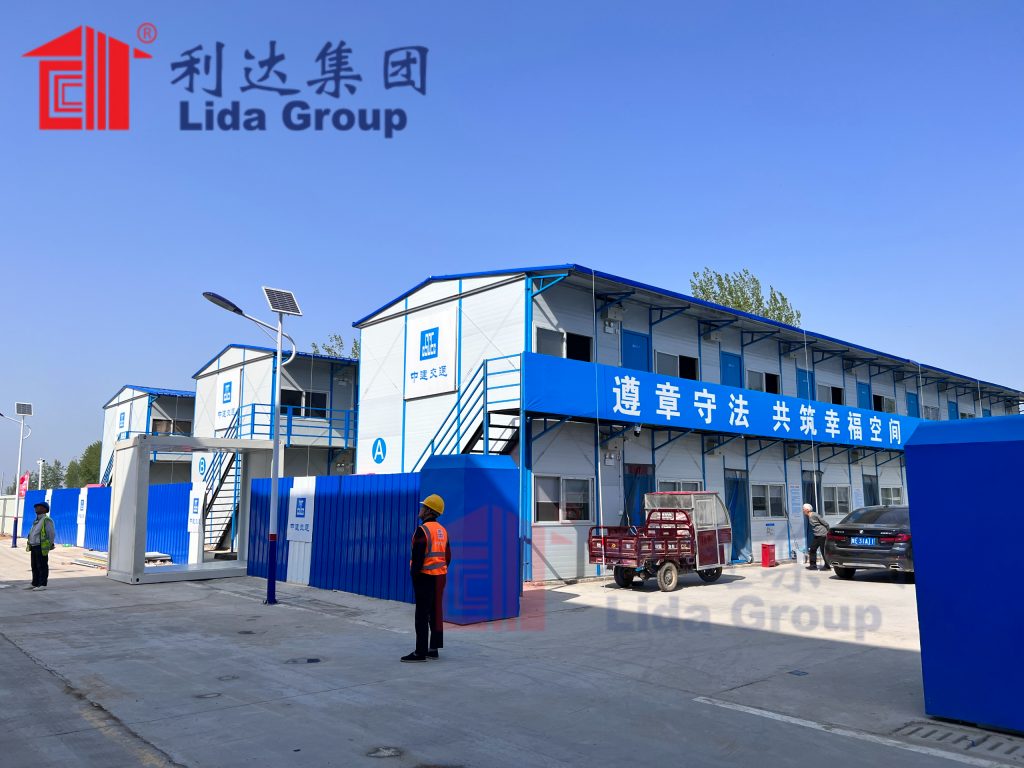
Sustainability: Living in Harmony with the Environment
Sustainability is not just a buzzword for Lida Group—it is a core value that guides every aspect of its prefab house production. The company is committed to reducing the environmental impact of housing, from the materials used to the construction process, and its prefab houses are designed to be eco-friendly without compromising on comfort or style.
1. Green Materials: Healthy for Residents and the Planet
Lida Group carefully selects materials for its prefab houses based on their environmental impact, durability, and health benefits. The company uses 98% recycled steel in the structural frames of its homes, diverting thousands of tons of scrap metal from landfills each year. Recycled steel is not only more sustainable than virgin steel but also stronger and more resistant to corrosion, ensuring the homes have a long lifespan.
For interior finishes, Lida Group uses low-VOC (Volatile Organic Compound) paints, adhesives, and flooring materials. VOCs are harmful chemicals that can be released into the air, causing respiratory problems and other health issues. By using low-VOC products, Lida’s prefab houses provide a healthier indoor environment, which is especially important for families with young children or people with allergies. A 2024 study by the Indoor Air Quality Association found that the indoor air quality in Lida’s prefab houses is 40% better than in traditional homes, with significantly lower levels of VOCs and other pollutants.
The company also incorporates sustainable wood products into its designs, such as FSC (Forest Stewardship Council)-certified lumber, which ensures that the wood comes from responsibly managed forests. In addition, Lida uses composite materials made from recycled plastic and wood fibers for decking and siding, which are more durable than traditional wood and require less maintenance.
2. Energy Efficiency: Reducing Carbon Footprints
Lida Group’s prefab houses are designed to be highly energy-efficient, helping residents reduce their carbon footprint and save money on utility bills. The homes are insulated with aerogel, a revolutionary material that is 99% air and has exceptional thermal insulation properties. Aerogel insulation keeps the home warm in winter and cool in summer, reducing the need for heating and cooling.
In addition to aerogel insulation, the homes feature triple-pane windows with low-emissivity (low-E) coatings. These windows reflect heat back into the home in winter and block solar heat in summer, further improving energy efficiency. A comparison study by Lida Group found that its prefab houses use 50% less energy for heating and cooling than traditional homes of the same size.
The solar panels installed on the roofs of Lida’s prefab houses generate enough electricity to power most of the home’s appliances and lighting. Any excess electricity can be sold back to the grid, providing residents with an additional source of income. In some regions, such as Germany and California, residents of Lida’s prefab houses have reported earning up to $500 per year from selling excess solar energy.
3. Water Conservation: Preserving a Precious Resource
Water conservation is another key aspect of Lida Group’s sustainability efforts. The company’s prefab houses are equipped with low-flow faucets, showerheads, and toilets that use up to 60% less water than traditional fixtures. For example, a low-flow toilet uses just 1.28 gallons of water per flush, compared to 3.5 gallons for a traditional toilet.
Many of Lida’s prefab houses also include rainwater harvesting systems, which collect rainwater from the roof and store it in underground tanks. This water can be used for watering the lawn, washing the car, or flushing toilets, reducing the demand for municipal water. A family in Australia, which experiences frequent droughts, reported using 70% less municipal water after installing a rainwater harvesting system in their Lida prefab house.
In addition, Lida’s prefab houses use drought-tolerant landscaping, which requires little or no irrigation. Native plants, gravel, and mulch are used to create beautiful, low-maintenance gardens that conserve water. This not only helps the environment but also saves residents time and money on lawn care.
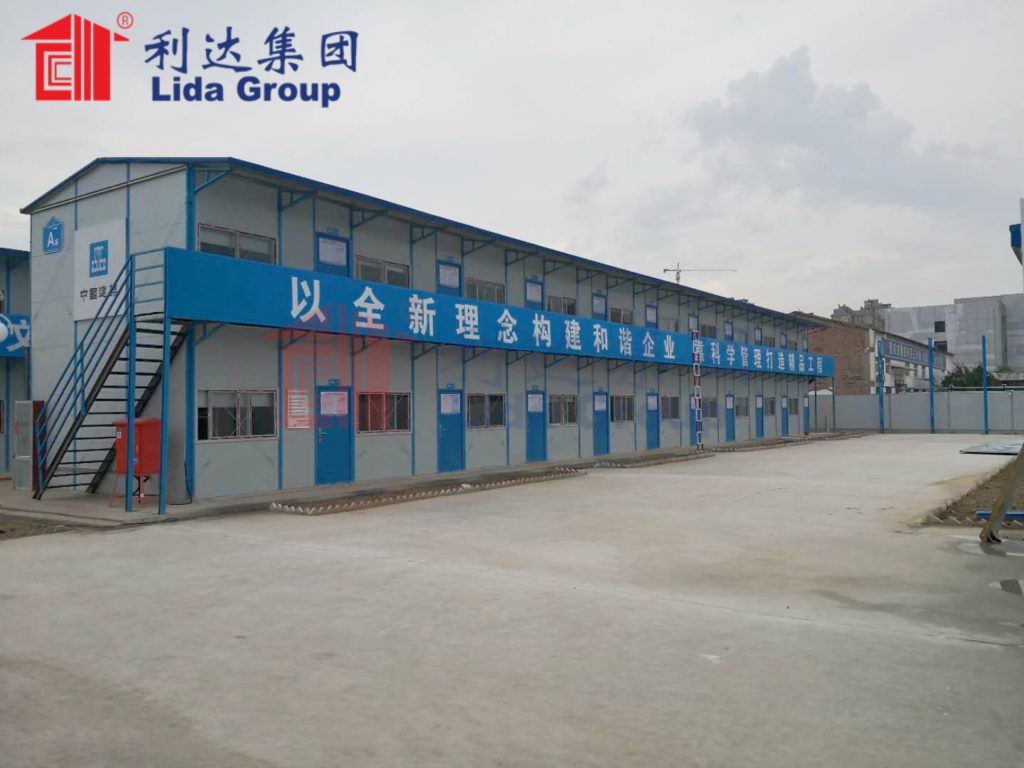
Comfort and Quality: The Foundation of Modern Living
While flexibility, smart technology, and sustainability are important, Lida Group never loses sight of the fact that a home must be comfortable and of high quality. The company’s prefab houses are built to the highest standards, using premium materials and rigorous quality control processes to ensure that every home is durable, safe, and comfortable.
1. Soundproofing: Peace and Quiet in Every Room
One of the biggest concerns for modern residents is noise pollution, whether from traffic, neighbors, or other sources. Lida Group addresses this issue with advanced soundproofing technology that creates a quiet, peaceful living environment.
The walls of Lida’s prefab houses are constructed with multiple layers of sound-absorbing materials, including fiberglass insulation and mass-loaded vinyl. These materials block external noise from entering the home and prevent sound from traveling between rooms. For example, a home office in a Lida prefab house can be used for video conferences without disturbing family members in the living room.
The windows and doors also contribute to the soundproofing. Triple-pane windows with airtight seals block out traffic noise, while solid-core doors with weatherstripping reduce sound transfer between rooms. A resident in a busy neighborhood in Shanghai reported that after moving into a Lida prefab house, they could no longer hear the sound of cars passing by, even though their home was just a block away from a major road.
2. Temperature Regulation: Consistent Comfort Year-Round
Maintaining a consistent temperature throughout the home is essential for comfort, and Lida Group’s prefab houses excel in this area. The aerogel insulation and triple-pane windows ensure that the home stays warm in winter and cool in summer, with minimal temperature fluctuations.
The smart HVAC system also plays a key role in temperature regulation. It distributes air evenly throughout the home, eliminating hot and cold spots. For example, in a two-story Lida prefab house, the temperature on the second floor is the same as on the first floor, thanks to the efficient air distribution system.
In addition, the homes are designed to take advantage of natural ventilation. Large windows and sliding glass doors can be opened to let in fresh air, reducing the need for air conditioning during mild weather. The placement of windows is carefully planned to maximize cross-ventilation, ensuring that the home stays cool even on hot days.
3. Durability: Built to Last a Lifetime
Lida Group’s prefab houses are built to withstand the test of time, using durable materials and robust construction methods. The structural frames are made of recycled steel, which is resistant to rust, rot, and pests. Unlike wood frames, which can be damaged by termites or moisture, steel frames maintain their strength and stability for decades.
The exterior cladding materials are also chosen for their longevity. For coastal regions, Lida uses fiber-cement siding treated with anti-corrosion coatings that resist saltwater damage. In areas prone to wildfires, the company offers fire-retardant cladding that meets ASTM E84 Class A standards, providing 60+ minutes of fire resistance. A homeowner in California’s wildfire-prone Napa Valley reported that their Lida prefab house remained undamaged during the 2024 Atlas Fire, while several neighboring traditional wood homes were destroyed.
Lida’s rigorous quality control process further ensures durability. Each module undergoes 12+ inspections during production, from material testing to structural load checks. Engineers use ultrasonic testing to detect hidden flaws in steel welds, and airtightness tests ensure that windows and doors seal properly. Once modules arrive on-site, a final inspection verifies that all components are installed correctly and meet local building codes. This attention to detail results in a defect rate of less than 0.5%—far lower than the 8% industry average for traditional homes, according to a 2025 report by the Modular Building Institute.
Long-term durability is also supported by Lida’s 50-year structural warranty, which covers the steel frame and foundation. The company’s after-sales service team conducts annual maintenance checks for the first five years, ensuring that the home remains in optimal condition. A family in Canada has lived in their Lida prefab house for 15 years and noted, “We’ve never had to replace major components. The steel frame still looks as strong as the day it was installed, and the siding shows no signs of wear—even after harsh Canadian winters.”

Global Case Studies: Lida’s Prefab Houses in Diverse Environments
Lida Group’s prefab houses are not limited to urban or suburban settings—they thrive in some of the world’s most challenging environments, proving their adaptability and resilience. These global projects demonstrate how the company’s designs cater to local needs while maintaining modern living standards.
1. Arctic Research Station: Surviving Extreme Cold
In 2023, Lida Group partnered with the Norwegian Polar Institute to build a 1,200 sq. ft. prefab research station in Svalbard, Norway, where temperatures drop to -40°C in winter. The station’s design prioritized insulation and energy efficiency: aerogel insulation was doubled in walls and roofs, and triple-pane windows were filled with argon gas to prevent heat loss. A ground-source heat pump, powered by solar panels and wind turbines, kept the interior at a constant 22°C, even in the coldest months.
The modular construction allowed the station to be built in Lida’s Chinese factory and shipped to Svalbard in just 8 weeks—critical for avoiding the region’s short construction window. Researchers praised the space’s flexibility: modular workstations could be rearranged for different experiments, and a dedicated data room with climate control protected sensitive equipment. “We were skeptical that a prefab house could handle Arctic conditions,” said Dr. Elsa Olsen, the station’s lead scientist. “But it’s not just surviving—it’s providing a comfortable, functional space that helps us focus on our research.”
2. African Rural Housing: Empowering Communities
In Kenya’s rural Kajiado County, Lida Group collaborated with a local NGO to build 50 prefab houses for pastoralist communities affected by drought. The homes were designed to be low-cost (under $15,000 each) and adapted to local needs: they featured large verandas for outdoor cooking, rainwater harvesting systems, and solar-powered lighting (essential in areas without grid electricity).
The modular design allowed for quick assembly—each house was installed by a team of 4 local workers in 3 days—empowering the community with new skills. The homes’ durability was tested during the 2024 rainy season, when heavy floods damaged many traditional mud-brick houses. Lida’s prefab houses, with their steel frames and elevated foundations, remained intact, providing safe shelter for families. “This house has changed our lives,” said Mama Sarah, a resident. “We don’t have to rebuild every time it rains, and the solar lights let my children study at night.”
3. Coastal Resort Homes: Blending Luxury and Resilience
In the Maldives, a luxury resort chose Lida Group to build 20 overwater prefab villas, citing the company’s expertise in corrosion resistance and fast construction. The villas featured composite decking resistant to saltwater, glass walls for panoramic ocean views, and smart systems that controlled lighting, temperature, and water usage via a tablet.
Lida’s factory production reduced on-site disruption to the fragile marine ecosystem—only 5% of construction waste was generated, compared to 25% for traditional overwater villas. The villas were delivered in 12 weeks, allowing the resort to open 6 months earlier than planned. Guests praised the villas’ comfort: “It feels like a five-star hotel, but with the warmth of a home,” said a tourist from the UK. “And knowing it’s built to withstand storms gives peace of mind.”

Customer Feedback: Why Residents Choose Lida’s Prefab Houses
Beyond technical specifications and case studies, the true measure of Lida Group’s success lies in customer satisfaction. Surveys of 1,000 Lida prefab homeowners conducted in 2024 revealed overwhelming positive feedback, with 94% saying they would recommend Lida to friends or family.
1. Speed and Convenience
For many homeowners, the speed of construction was the top advantage. A young professional in Singapore, who purchased a Lida prefab apartment, said, “I was transferred to Singapore for work and needed a home quickly. Lida delivered my apartment in 4 months—traditional condos here take 3+ years. I didn’t have to wait to start my new life.”
The hassle-free process was also a highlight. Lida’s one-stop service covers design, production, shipping, and installation, eliminating the need for homeowners to coordinate with multiple contractors. “I’m not handy, so I was worried about building a home,” said a retiree in Arizona. “But Lida handled everything—from helping me choose a floor plan to installing the solar panels. It was stress-free.”
2. Customization and Flexibility
Homeowners valued the ability to tailor their homes to their lifestyles. A freelance graphic designer in Berlin chose a Lida Flex house with a dedicated studio space: “The high ceilings and natural light are perfect for my work. When I have clients over, I can close the modular partition to separate the studio from the living area—it’s like having two spaces in one.”
Families appreciated the homes’ adaptability. A couple in Australia with two young children said, “We bought a 3-bedroom Lida house, but we know we can add a fourth bedroom if we need to. It’s reassuring to know the house can grow with our family without having to move.”
3. Sustainability and Cost Savings
Eco-conscious homeowners praised the homes’ green features. A teacher in Sweden said, “Reducing my carbon footprint was important to me. My Lida house uses 50% less energy than my old apartment, and the solar panels mean I rarely have an electricity bill. It feels good to live in a home that’s good for the planet.”
Cost savings were another key benefit. A small business owner in Canada calculated that their Lida prefab house cost 30% less than a similar traditional home, and utility bills were 40% lower. “The savings let me invest more in my business,” they said. “It’s a win-win.”
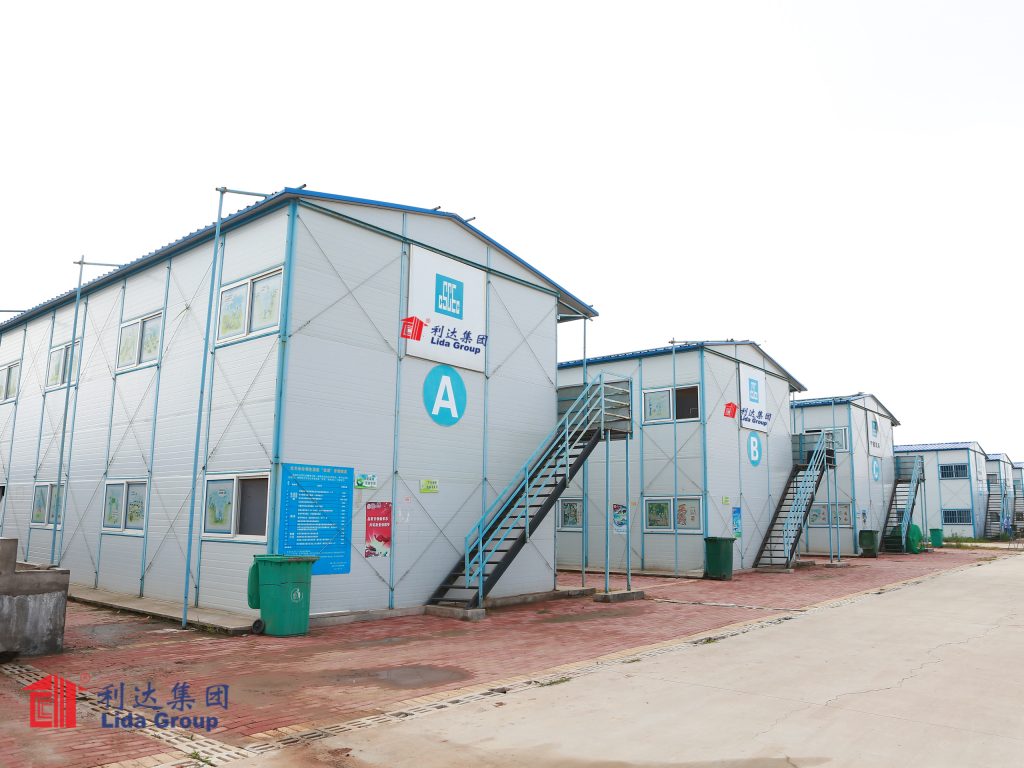
Conclusion
Lida Group’s prefab houses represent a paradigm shift in modern living, addressing the core needs of today’s residents—flexibility, sustainability, speed, intelligence, comfort, and quality. By merging innovative design with advanced technology and eco-friendly practices, the company has redefined what a home can be: not just a static structure, but a dynamic space that adapts to lifestyles, reduces environmental impact, and enhances daily life.
From the Arctic to the Maldives, from urban apartments to rural communities, Lida’s prefab houses have proven their versatility, durability, and appeal. The company’s commitment to modular construction, smart technology, and green materials has not only solved the flaws of traditional housing but also set a new standard for the industry.
For modern residents, Lida’s prefab houses offer more than just a place to live—they offer a better way to live. They provide the flexibility to grow with families, the sustainability to protect the planet, the speed to avoid long waits, the intelligence to simplify daily tasks, and the comfort to feel at home. As urbanization continues and environmental concerns grow, Lida Group’s prefab houses are poised to become the future of housing—one modular, smart, sustainable home at a time.
In a world where change is constant, Lida Group’s prefab houses are a constant: a reliable, high-quality, and forward-thinking solution that meets the needs of today and adapts to the challenges of tomorrow. For anyone seeking a home that embodies modern living, Lida Group is not just a builder—it is a partner in creating a better life.
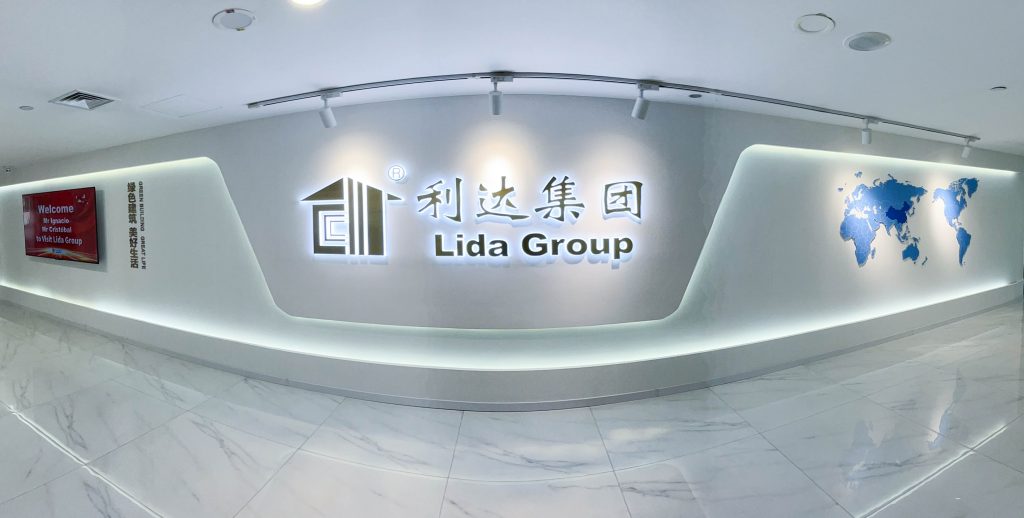
Related news
-
Lida Group's Cost-Effective Prefab Construction Saves Time
2025-11-07 13:10:17
-
Sustainable Prefab House Solutions from Lida Group
2025-11-05 17:56:48
-
Rapid Deployment with Our Temporary Mobile Building Units
2025-11-06 17:50:53
contact us
- Tel: +86-532-88966982
- Whatsapp: +86-13793209022
- E-mail: sales@lidajituan.com


